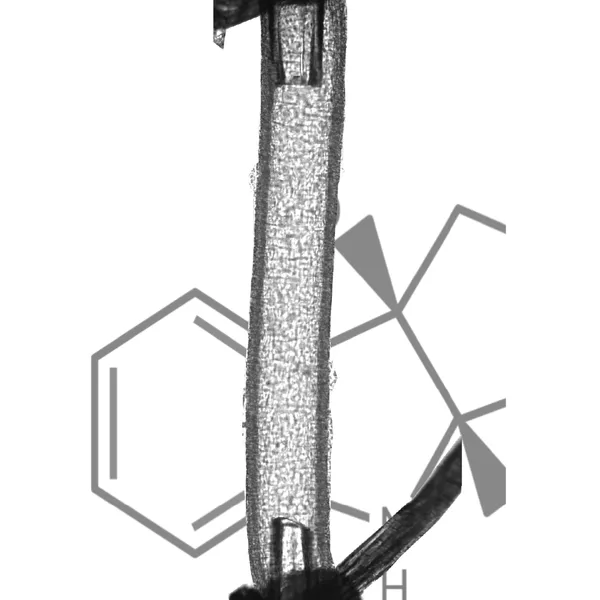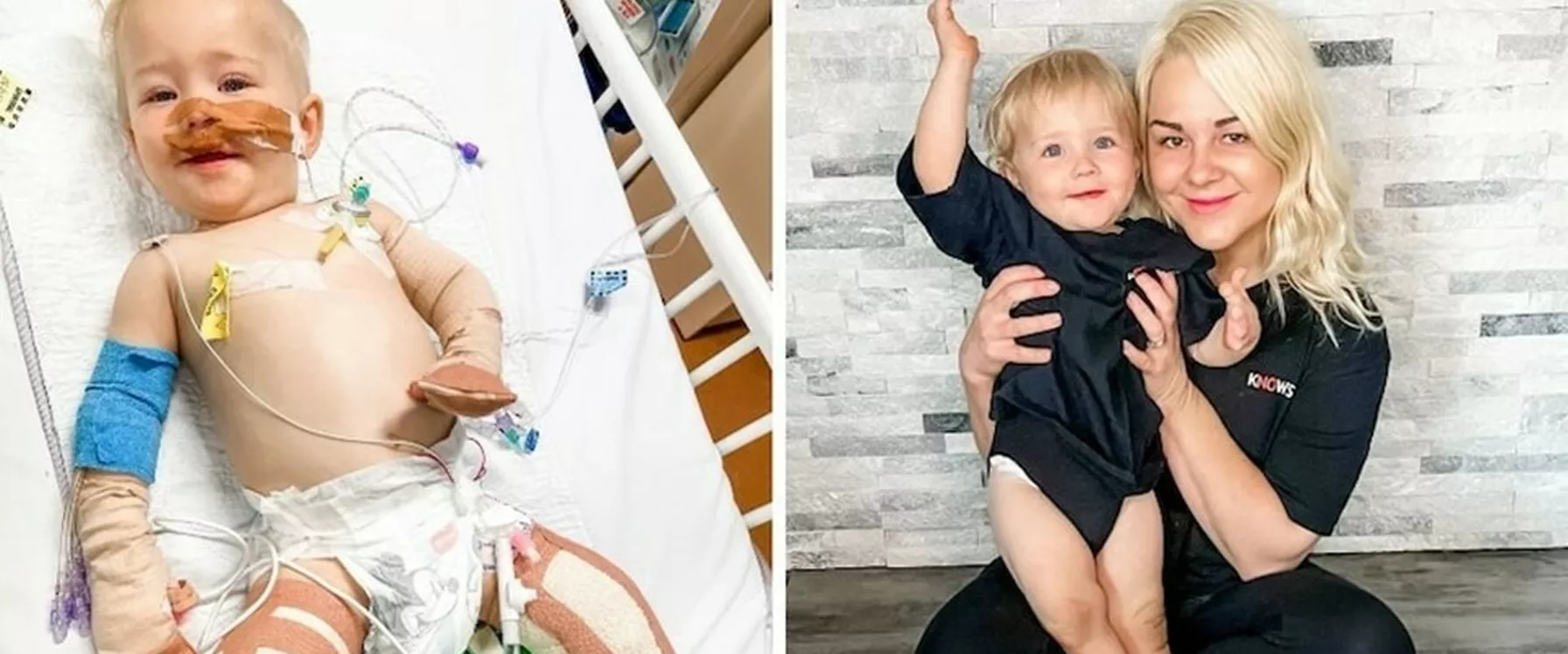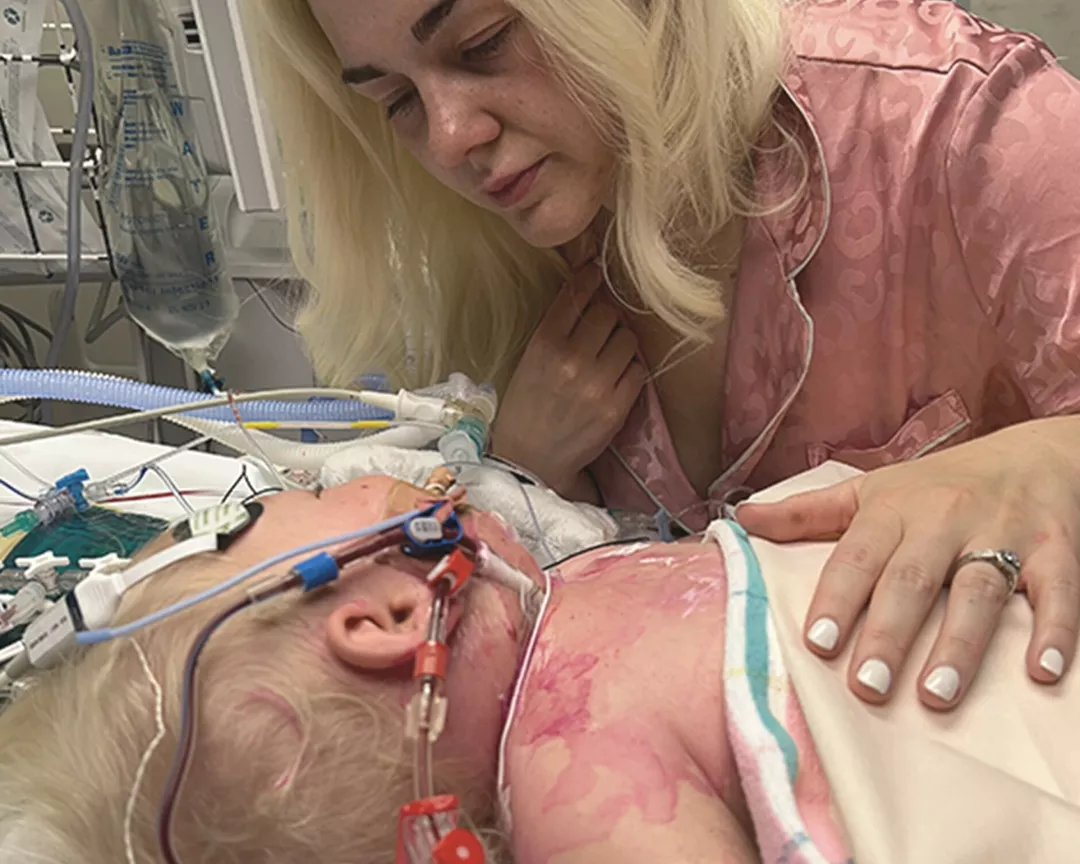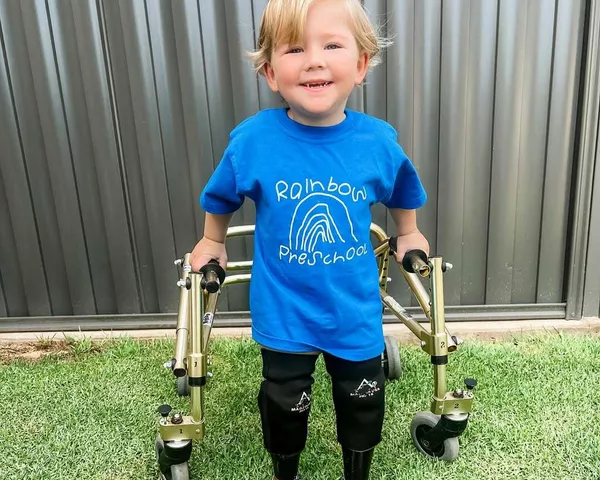
Ryan Lines was a happy, beautiful little boy who had just turned one when he started coming down with flu-like symptoms. Just days later, Ryan went into severe septic shock had a cardiac arrest. This is his story.
How you can help
Imagine being alone in a hospital room, exhausted and terrified, when a doctor tells you that your baby’s heart is failing - and he won’t survive.
Imagine watching helplessly as a team of doctors run into the ward and perform CPR on his tiny chest, your world collapsing as you beg them not to stop.
Imagine a nurse picking you up off the ground as you scream and hear the words “there is nothing more we can do”.
In December 2022, this unthinkable scenario became a reality for Jessica Lines. What started as a simple cold for her 13-month-old son, Ryan, quickly spiralled into a life-threatening emergency. A high fever and a non-blanching rash led Jess and her husband, Sam, to take Ryan to their local hospital in Broken Hill, a remote town in NSW. But his condition deteriorated so rapidly that he had to be airlifted to Adelaide.
Alone in the hospital, having gone two days without sleep, Jess received the most devastating news a parent could hear.
“Doctors surrounded Ryan, working frantically to save him,” she remembers.
How you can help
But against all odds, after 10 agonising minutes of CPR, Ryan’s heart started beating again.
Sadly, Ryan’s fight was far from over.
He spent a month in intensive care, battling for his life. By February 2023, Ryan needed life-saving amputation surgery due to the damage caused by the infection.
"When you go into severe septic shock so many things happen to your body that I didn't know could happen,” mum Jessica explains. “Ryan also developed multiple organ dysfunction and failure and what’s called ‘disseminated intravascular coagulation’, where small blood clots develop throughout your bloodstream, blocking the blood flow to many parts of your body, including your limbs and your organs.”
“Our baby boy had to undergo two major surgeries to amputate both legs, which we couldn’t comprehend. He also had vocal cord damage (from being intubated), minor brain damage and lost all his fingertips and some fingers.”
Sepsis is the leading cause of death from infection around the world. In Australia alone, sepsis affects 55,000 people each year, of whom 8,700 will die.
The infection causes inflammation throughout the body and may progress to septic shock - a dramatic drop in blood pressure that is a life-threatening medical emergency.
In fact, one person dies of sepsis every 2.8 seconds globally.
For survivors like Ryan, the battle doesn’t end in the hospital. Many are left with life-altering disabilities.
After leaving hospital, Ryan had to return to Adelaide and Sydney for multiple surgeries and testing. He has also been fitted with two sets of prosthetic legs, which he is getting used to walking in and will also need further surgery to have the bones shaved back in his legs (as they continue to grow).
How you can help
"Ryan is going great and now a cheeky three year old," Jess shares. "He started preschool as the beginning of the year which was a huge milestone, but he still has moments of frustration and may need a wheelchair at some point."
While the Lines family have a lifelong journey ahead, they are so grateful their little boy survived.
“No family should have to go through what we did,” Jess continues. “We are so grateful that Ryan is still with us, but we have a long road ahead and still grieving our past life.
"I urge everyone to learn the signs of sepsis and to support the incredible work of Dr Chris Stanley and his team. Their research could, one day, mean the difference between life and death for someone you love.”

How is HRI helping?
Dr Christopher Stanley and his team, the Microvascular Research Group, are determined to change the future for sepsis patients. Their research focuses on understanding the dangerous drop in blood pressure that occurs in septic shock, with the ultimate goal of developing life-saving treatments.
There is currently no clinical treatment and very little is understood about how sepsis devastates the arterial system and causes such high fatality rates.
Dr Stanley has already identified an enzyme that lowers blood pressure in sepsis models. Now, he is working to turn this discovery into effective treatments for humans.
Your support could help fund the equipment and supplies, Dr Stanley and his team need to carry out our research, accelerating life-changing treatments for those in need.
How you can help
Related research areas









